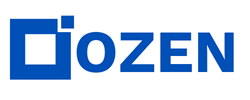Unlock the power of Bayesian Optimization to revolutionize manufacturing processes with cutting-edge probabilistic inference techniques.
Challenges
Manufacturing industries today face a myriad of challenges, ranging from maintaining efficiency and quality to minimizing production costs and downtime. As markets become more competitive, the pressure to innovate and optimize processes grows exponentially.
Traditional optimization methods often fall short in addressing the complexity and variability of modern manufacturing environments. This necessitates the adoption of advanced techniques that can handle uncertainty and provide robust solutions.
Engineering Solution
Bayesian Optimization (BO) is a powerful strategy for optimizing complex, expensive, and noisy functions. It is particularly useful in scenarios where each function evaluation is costly, such as in manufacturing process optimization.
By leveraging techniques such as Gaussian Processes, probabilistic inference allows for the efficient exploration of the parameter space, guiding the optimization process towards the most promising regions and avoiding unproductive areas.
Ansys optiSLang has an embedded Probabilistic Inference for Bayesian Optimization (PI-BO) module to perform optimization analysis in a user-friendly manner.
Case Study:
To illustrate the efficacy of PI-BO, we considered its application to a simple 2D benchmark case (Figure 1). The geometry has inlet and outlet regions as shown, with six circular holes for which the diameters were set as input parameters for optimization. This geometry could be considered a simplified shower head, and the target could be maximized pressure change between inlet and outlet, and uniform pressure distribution.

Figure 1. 2D Benchmark case with inlet/outlet regions and parametric dimensions
The Ansys Workbench project is shown in Figure 2.

Figure 2. Ansys Workbench project
The "Named Expressions" in the Fluent setup can be considered for input and output parameters as well (Figure 3).

Figure 3. Named Expressions for input and output parameters for optimization
The velocity inlet with defined inlet velocity above, and zero pressure outlet conditions were imposed. Before setting the optimization features, the best practice would be to run the model at the initial condition of the variables to test if the results make sense, and to make sure no failure is observed.
The optimization module from the Toolbox on the left should be dragged as a standalone system to Project Schematic screen. That opens the window to select the optimization parameters and set the range of them. The user is given an option to convert a parameter to a constant in this screen. For this example, the following settings were used (Figure 4):

Figure 4. The parameter settings for optimization
Following that, the objectives have to be described. As mentioned before, the maximum pressure drop and minimum uniformity are the criteria for the optimization (Figure 5).

Figure 5. The criteria setting
The next screen asks the user to select the optimization method. The default setting is the One-Click Optimization. In this application, from the Manual optimizer selection, the PI-BO option is selected (Figure 6).

Figure 6. The PI-BO optimization method selection
After these settings, the optimization module will be connected to achieve the project structure shown in Figure 2. Double clicking the "Probabilistic Inference for Bayesian Optimization" opens the optimizer settings to select the number of iterations. The default of maximum number of iterations is 90. For this example, 10 was selected (Figure 7). This means that, including the new start designs, the total number of designs to be explored will be 20. User should explore different number of iterations depending on the application.

Figure 7. The number of designs to be iterated
After the optimization starts, the optimization monitoring screen pops up. The final stage of the optimization is shown in Figure 8.

Figure 8. The optimization monitoring screen
The best performing designs will be shown to the user with the corresponding settings of the parameters. The user can hover of the Objective Pareto Plot window to pick different designs, and the corresponding parameters are shown on Design Parameter window.
Benefits
The use of PI-BO optimization will provide robust and resilient process with less number of designs compared to the default optimization setting of One-Click Optimization.
Looking ahead, the integration of advanced optimization techniques such as Bayesian Optimization will continue to revolutionize the manufacturing industry. As these methods become more sophisticated, their application will expand beyond traditional boundaries.
The details of this application can be found in the video below:
The video can be reached from Ozen Engineering YouTube channel with the following link:
PI-BO Application on a 2D Case
Ozen Engineering Expertise
 Ozen Engineering Inc. leverages its extensive consulting expertise in CFD, FEA, optics, photonics, and electromagnetic simulations to achieve exceptional results across various engineering projects, addressing complex challenges like multiphase flows, erosion modeling, and channel flows using Ansys software.
Ozen Engineering Inc. leverages its extensive consulting expertise in CFD, FEA, optics, photonics, and electromagnetic simulations to achieve exceptional results across various engineering projects, addressing complex challenges like multiphase flows, erosion modeling, and channel flows using Ansys software.
We offer support, mentoring, and consulting services to enhance the performance and reliability of your mining equipment and systems. Trust our proven track record to accelerate projects, optimize performance, and deliver high-quality, cost-effective results for both new and existing systems. For more information, please visit https://ozeninc.com.
May 16, 2025 8:59:21 AM
